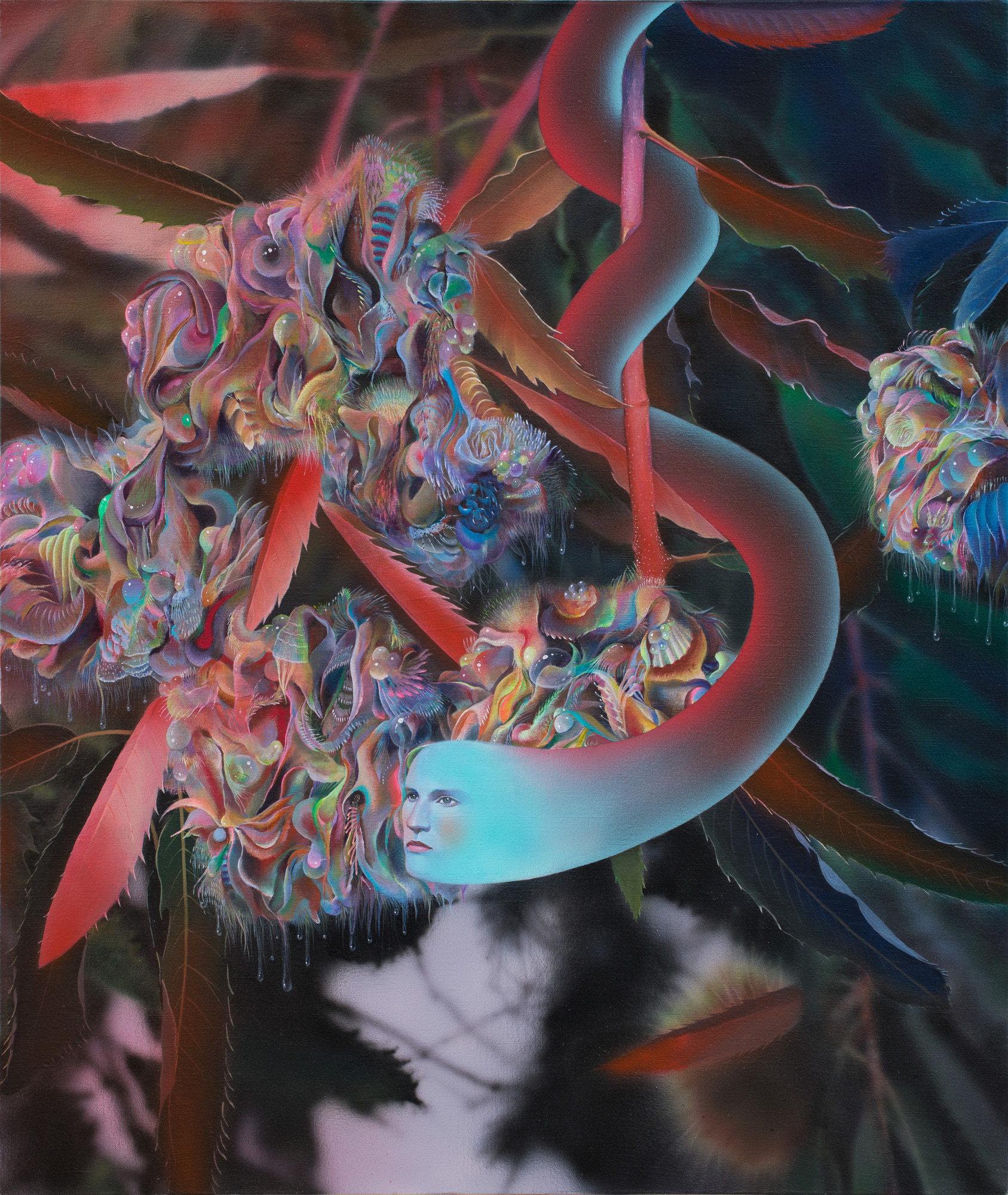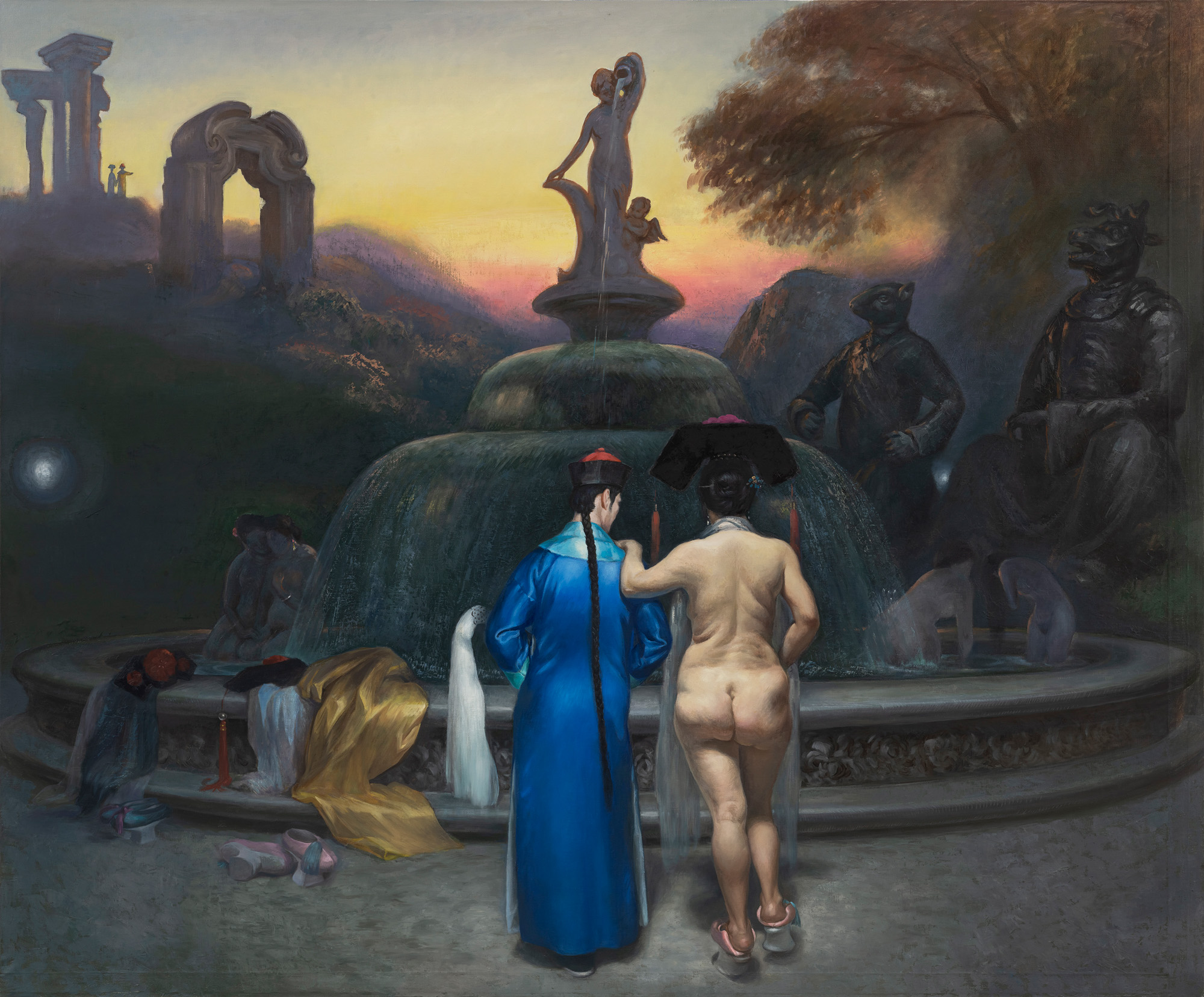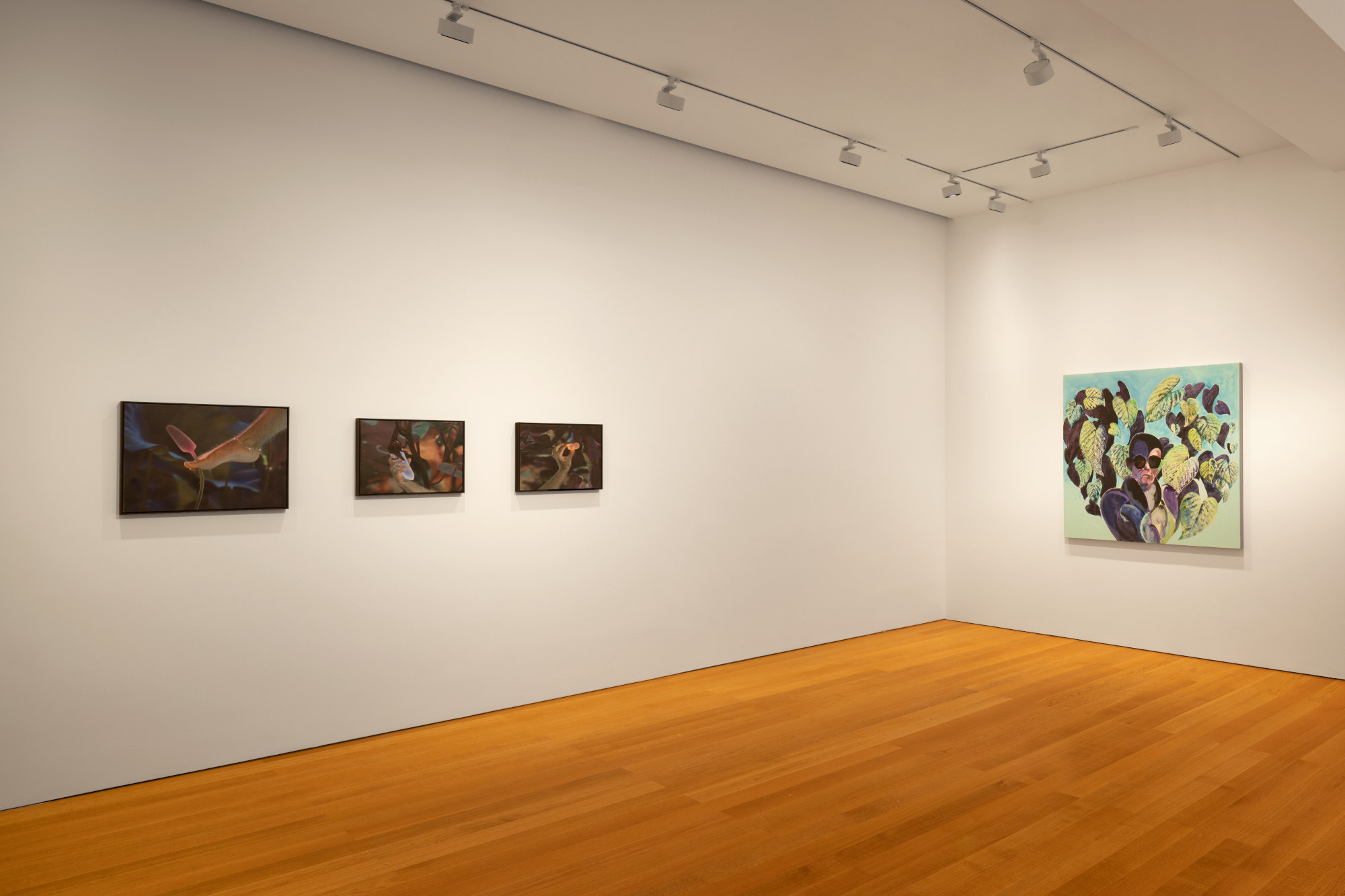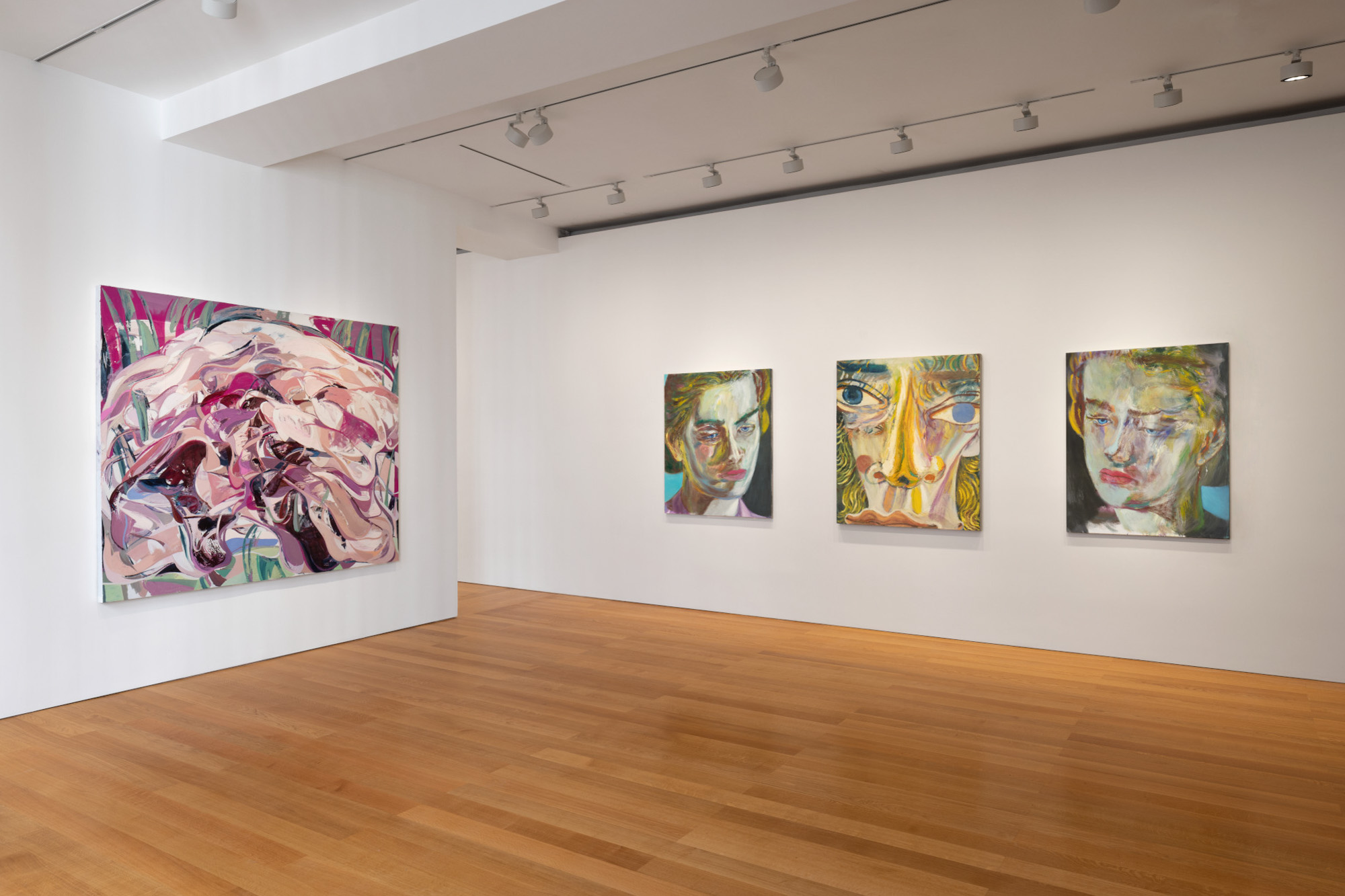Negotiating Reality in “Uncanny Valley”
By Denise Wang

WANG HAIYANG, Green Snake, 2022, acrylic on canvas, 65 × 55 cm. Courtesy the artist and Gagosian, Hong Kong.
“Uncanny Valley”
Gagosian, Hong Kong
Jan 31–Mar 4, 2023
Japanese roboticist Masahiro Mori proposed the uncanny valley hypothesis in 1970 to explain the dramatic decline in correlation between objects’ similarity to human beings and the degree of an audiences’ fondness for that object. Inspired by this theory, Beijing-based curator Yang Zi curated the works of 11 Chinese artists in the exhibition “Uncanny Valley” at Gagosian gallery in Hong Kong. Beauty and creepiness are intertwined in these artworks, which collectively visualize our contradictory feelings toward the body.
The painting Green Snake (2022) by multimedia artist Wang Haiyang responds to the theme by blurring the boundaries between human and nonhuman. The work depicts a creature with a person’s face and a snake’s body floating in a grotesque space of branches and leaves. The image of a snake casts a sexual allusion upon the painting as they often represent femme fatales who seduce men and absorb their energy in Chinese folklore. Additionally, their cold, clammy skin devoid of fur or hair has a naked, non-mammalian appearance. Wang features animal characteristics in other works such as in The 24 Solar Terms and Sex (2021) paintings. Here, he places a hand or foot covered in thick hair resembling dense animal fur in the center of his works. The limbs’ interactions with plants’ reproductive organs convey seductive implications. Despite a high degree of resemblance to human beings in facial features and extremities, the dissimilarity of their bodies reminds viewers that these creatures might not be human, causing a sharp dip in their likeability, as predicated in Mori’s theory.

WANG XINGWEI, Sunset at the Old Summer Palace, 2020, oil on canvas, 205 × 245 cm. Courtesy the artist and Gagosian, Hong Kong.
Unlike Wang Haiyang, the contemporary Chinese oil painter Wang Xingwei refers to the body less sexually, toying instead with ideals of physical beauty to mirror complexities in social realities. Sunset at the Old Summer Palace (2020) presents a voluptuous female nude—believed to be Dowager Cixi—facing muscular Chinese zodiac sculptures and shapely young women playing in a classical-looking fountain. The Dowager’s drooping skin suggests aging and functions as a visual metaphor for the crumbling Qing empire in the sunset’s afterglow. Yang Zi interprets the uncanny valley hypothesis here, paralleling feelings of discomfort caused by near-perfect robots in Mori’s theory to the everyday frustrations of failed expectations. The figure’s body here serves as a medium between the unreal and real, distancing viewers from the dreamy atmosphere caused by the unnatural reddish lighting and reminding us of the eerie feelings evoked by reality’s imperfections.

Installation view of (left) WANG HAIYANG‘s 24 Solar Terms and Sex, 2021, acrylic on canvas, dimensions variable; and (right) WANG XIAOQU’s Slice of Heart, 2022, oil on canvas, 135 × 155 cm, at "Uncanny Valley," Gagosian, Hong Kong. Photo by Martin Wong. Courtesy Gagosian.
As opposed to the rich historical references in Wang Xingwei’s painting, younger oil painter Jiang Cheng captures and amplifies the meaninglessness encountered in his life, crystalizing elusive moments related to his practice of Zen Buddhism. His ongoing U series (2020– ) appears like a set of centrally framed headshot portraits. However, the artist does not base the portrait on any actual human being but instead on his thoughts and emotions. The “U” in the title puns on “you,” evoking the domain outside his self-awareness. The duality gives his works an academism, along with an experimental sense of cubism most noticeably depicted in the disproportionate and misplaced facial features in U-107 Michael (2022).

Installation view of (left) ZHANG ZIPIAO‘s Brain 02, 2022, oil on canvas, 230 × 190 cm, and (right) JIANG CHENG’s U series, 2020- , oil on canvas, dimensions variable, at "Uncanny Valley," Gagosian, Hong Kong. Photo by Martin Wong. Courtesy Gagosian.
Although the vibrant colors and dynamic lines of these artworks paint an occasionally beautiful and enjoyable scene, audiences may feel a creeping sense of unease under their skin. While the exhibition featured works by Chinese artists, some of whom utilize culturally specific motifs, Yang Zi intended to visualize universal feelings relating to the uncanny that resonate with a broader audience. He enriches the uncanny valley hypothesis here in contexts beyond Masahiro Mori’s original examples in digital technology and robotics, telling us that life, more often than not, deviates from our expectations. We might attempt to commit to memory the unsettling feelings evoked by the eccentric beauty in these works, as the conflict between our expectations and reality will always exist. It will do us good to remember that, given that we must wrestle with this feeling for the rest of our lives.
Denise Wang is an editorial intern at ArtAsiaPacific.






